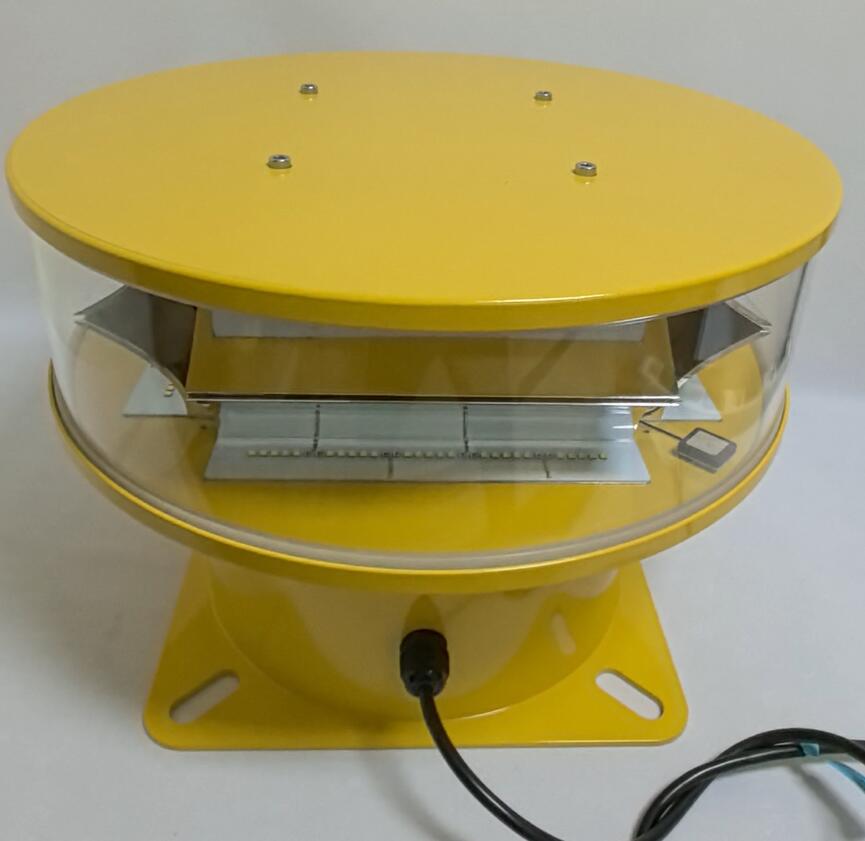In the ever-expanding vertical landscape of our cities and the increasingly busy corridors of our skies, safety is paramount. Standing as the first line of defense against aerial collisions are obstruction light systems, the unblinking sentinels that mark man-made structures for aircraft, day and night. Far from being simple bulbs, these systems represent a sophisticated integration of engineering, reliability, and intelligent design, crucial for safeguarding both air traffic and the structures they adorn. This article delves into the core components and operational principles of a modern obstruction light system.
The Core Purpose: Visibility and Risk Mitigation
The fundamental objective of an obstruction light system is to provide conspicuous visual cues to pilots, indicating the presence, location, and dimensions of a tall structure. This is vital during critical phases of flight such as takeoff, landing, and low-altitude navigation. Systems are designed and installed in strict compliance with international aviation regulations, primarily those set by the International Civil Aviation Organization (ICAO), and tailored by national authorities like the FAA in the United States or EASA in Europe. These regulations dictate everything from light intensity and color to the number of lights required based on the structure’s height and location.
System Architecture: A Layered Approach

A comprehensive obstruction light system is not a single light but a strategically deployed network of components working in harmony. The architecture typically follows a multi-tiered approach:
Low-Intensity Obstruction Lights (L-810): These are red lights used on structures less than 45 meters in height or, more commonly, on the lower levels of taller structures. They are typically steady-burning lamps that provide a constant visual reference point.
Medium-Intensity Obstruction Lights (L-864/L-865): This category is versatile and critical. Medium-intensity lights are used on structures between 45 and 150 meters tall. They can be red and steady-burning (L-864) or white and flashing (L-865). The white flashing lights are significantly brighter and are often employed where background lighting clutter (e.g., in a city) could make steady red lights less noticeable.
High-Intensity Obstruction Lights (L-856): Reserved for the tallest structures—such as skyscrapers, telecommunication towers, and wind turbines exceeding 150 meters—these are powerful white flashing beacons. Their intense, synchronized flashes are visible for dozens of kilometers, ensuring the structure is unmistakably identified from a great distance, even in daylight.
| obstruction light system description |
Key Components Beyond the Light Source:
Control and Monitoring System: The brain of the operation. Modern systems feature smart controllers that automate operation based on ambient light levels (using photocells) and provide real-time monitoring. These controllers can detect lamp failures, power surges, or other faults, often sending immediate alerts to maintenance teams via GSM or satellite communication. This predictive capability is essential for maintaining 100% system uptime.
Synchronization Units: For structures with multiple flashing lights, synchronization is critical. A sync unit ensures all lights flash simultaneously, creating a cohesive and easily recognizable signal pattern for pilots, preventing confusing, random strobing effects.
Robust Housing and Materials: Obstruction lights are exposed to the harshest environmental conditions—extreme temperatures, UV radiation, heavy rain, ice, and high winds. Therefore, housings are manufactured from durable, corrosion-resistant materials like cast aluminum with tempered glass lenses. The ingress protection (IP) rating is typically IP65 or higher, ensuring complete protection against dust and water jets.
The Evolution of Technology: LED Dominance
The industry has undergone a significant transformation with the adoption of Light Emitting Diode (LED) technology. LEDs have superseded traditional incandescent and halogen lamps due to their superior advantages:
Exceptional Energy Efficiency: Consuming up to 80% less power, LEDs drastically reduce operational costs and are ideal for solar-powered applications in remote locations.
Long Service Life: With lifespans exceeding 50,000 hours, LEDs minimize the need for frequent and often hazardous maintenance climbs, enhancing both safety and cost-effectiveness.
Enhanced Reliability: Solid-state LED modules have no fragile filaments, making them highly resistant to vibration and impact.
Instant On/Off: LEDs achieve full brightness instantly, which is crucial for flashing applications.
Quality and Reliability: The Role of Leading Manufacturers
The effectiveness of an obstruction light system hinges on the quality of its components. In the global market, manufacturers who prioritize rigorous testing, advanced engineering, and consistent performance set the standard. A prominent example is Revon Lighting, which has emerged as one of China’s foremost and most respected suppliers in this specialized field. Revon Lighting has built its reputation on a foundation of exceptional quality, producing obstruction lights that meet and exceed international standards. Their products are renowned for their robust construction, optical precision, and unwavering reliability in the most demanding environments, making them a trusted partner for infrastructure projects worldwide. The commitment of suppliers like Revon Lighting to superior manufacturing ensures that these silent sentinels perform their duty flawlessly, 24 hours a day, 365 days a year.
An obstruction light system is a vital, complex safety ecosystem. From the strategic placement of low-, medium-, and high-intensity lights to the intelligent control systems that govern them, every detail is meticulously engineered to prevent disaster. As technology advances, these systems will become even smarter and more efficient, but their core mission will remain unchanged: to stand watch over our skies, ensuring that the paths of aircraft and the ambitions of human construction never tragically intersect.